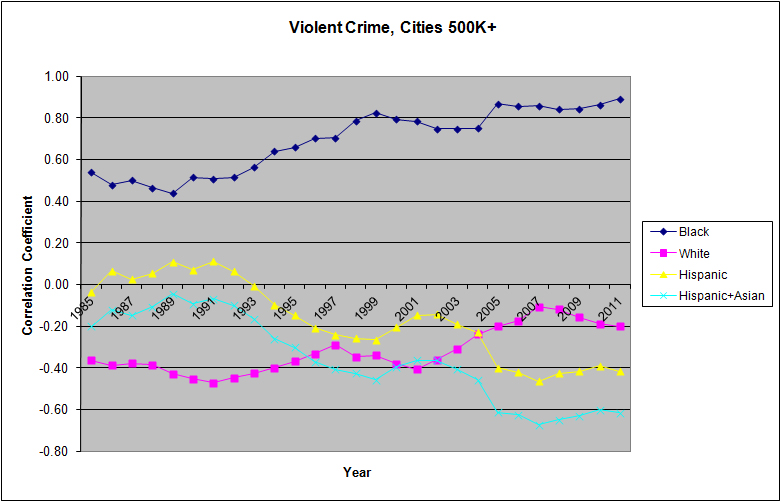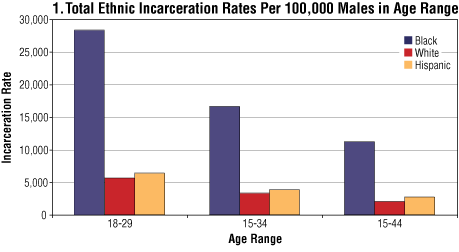http://www.ronunz.org/2013/07/20/race-and-crime-in-america/

Indeed, the race/crime correlation so substantially exceeds the poverty/crime relationship that much of the latter may simply be a statistical artifact due to most urban blacks being poor. Consider that both blacks and Hispanics currently have similar national poverty rates in the one-third range, more than double the white figure, and each constitutes well over 20% of our urban population. However, major cities with substantial poverty but few blacks usually tend to have far lower levels of crime. For example, El Paso and Atlanta are comparable in size and have similar poverty rates, but the latter has eight times the robbery rate and over ten times the homicide rate. Within California, Oakland approximately matches Santa Ana in size and poverty, but has several times the rate of crime. Thus, it seems plausible that removing the black population from our calculation might actually reduce the residual poverty/crime correlation for non-blacks to a moderate or even a low figure.....
....One obvious reaction to these concerns was strong political support for a massive national crackdown on crime, and the prison incarceration of black men increased by almost 500% during the two decades after 1980. But even after such enormous rates of imprisonment, official FBI statistics indicate that blacks today are still over 1,000% more likely to commit homicide than non-blacks and their robbery rate is nearly 1,500% larger; these disparities seem just as high with respect to Hispanic or Asian immigrants as they are for whites. Thus, replacing a city’s blacks with immigrants would tend to lower local crime rates by as much as 90%, and during the 1990s American elites may have become increasingly aware of this important fact, together with the obvious implications for their quality of urban life and housing values.

Indeed, the race/crime correlation so substantially exceeds the poverty/crime relationship that much of the latter may simply be a statistical artifact due to most urban blacks being poor. Consider that both blacks and Hispanics currently have similar national poverty rates in the one-third range, more than double the white figure, and each constitutes well over 20% of our urban population. However, major cities with substantial poverty but few blacks usually tend to have far lower levels of crime. For example, El Paso and Atlanta are comparable in size and have similar poverty rates, but the latter has eight times the robbery rate and over ten times the homicide rate. Within California, Oakland approximately matches Santa Ana in size and poverty, but has several times the rate of crime. Thus, it seems plausible that removing the black population from our calculation might actually reduce the residual poverty/crime correlation for non-blacks to a moderate or even a low figure.....
....One obvious reaction to these concerns was strong political support for a massive national crackdown on crime, and the prison incarceration of black men increased by almost 500% during the two decades after 1980. But even after such enormous rates of imprisonment, official FBI statistics indicate that blacks today are still over 1,000% more likely to commit homicide than non-blacks and their robbery rate is nearly 1,500% larger; these disparities seem just as high with respect to Hispanic or Asian immigrants as they are for whites. Thus, replacing a city’s blacks with immigrants would tend to lower local crime rates by as much as 90%, and during the 1990s American elites may have become increasingly aware of this important fact, together with the obvious implications for their quality of urban life and housing values.

 Home
Home
